
-
Trailer – Sarah Beth Watkins on Margaret Tudor

-
Blessed Thomas Abel’s bell carving in the Beauchamp Tower

As it is the anniversary of the execution of Catholic priest Thomas Abel (Abell) on 30th July 1540, I thought I’d share this photo that Tim took of a carving done by Thomas into the stone wall of the Beauchamp Tower during his imprisonment there. You can click on the picture to make it bigger. As you can see, it’s a rebus, i.e. a puzzle in which words are represented by pictures and letters – so we have “Thomas” then a picture of a bell with the letter “A” on it: Thomas Abell. It’s one of my favourite carvings in the Beauchamp Tower.
[Read More...] -
This week in history 30th July – 5 August

30 July:
1540 – Executions of Catholic martyrs Thomas Abell, Edward Powell and Richard Fetherston for refusing to acknowledge the royal supremacy. They were hanged, drawn and quartered at Smithfield. Click here for more information.
[Read More...]
1540 – Burnings of religious reformers Robert Barnes, William Jerome and Thomas Garrard at Smithfield for heresy.
1550 – Death of Thomas Wriothesley, 1st Earl of Southampton, at Lincoln House in Holborn. He was buried in St Andrew’s Church, Holborn, but then moved later to Titchfield. Wriothesley served Henry VIII as Lord Privy Seal and Lord Chancellor. Click here to read more about him.
1553 – Princess Elizabeth left her new home, Somerset House, to ride to Wanstead and greet her half-sister, Mary, England’s new queen. Click here to read more.
1563 – Birth of Robert Parry, writer and diarist, at Tywysog in Denbighshire, North Wales. His works included “Moderatus: the most Delectable and Famous Historie of the Black Knight”.
1570 – Burial of Sir William Godolphin, soldier, at Breage.
1588 – The wind changed and the remaining ships of the Spanish Armada were forced northwards and scattered. The wind became known as the “Protestant wind” because people believed that God had sent this wind to protect England from the Catholic Spanish Armada. Later, when it was obvious that the Spanish Armada had been defeated, medals were struck to celebrate and these medals were inscribed with “Flavit Jehovah et Dissipati Sunt“, meaning “Jehovah blew with His wind and they were scattered”. The wind certainly helped the English fleet. -
Elizabeth I and Mary, Queen of Scots – True or False quiz
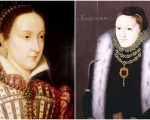
Happy Sunday! The trailer for the new Mary, Queen of Scots movie has caused lots of controversy amongst history lovers so I was inspired to make this Mary, Queen of Scots and Elizabeth I quiz. So, grab your favourite beverage and snack, make yourself comfortable and let’s get those little grey cells working!
[Read More...] -
Thomas Cromwell and Catherine Howard Resources

As today is the anniversary of the execution of Thomas Cromwell and the marriage of Henry VIII and Catherine Howard on 28th July 1540, I thought I’d share with you some Thomas Cromwell and Catherine Howard resources as we have plenty of videos, talks, quizzes and articles on these two famous Tudor personalities.
[Read More...] -
Live chat transcript – Matthew Lewis – The Survival of the Princes in the Tower

A big thank you to Matthew Lewis for being so generous with his time and knowledge, and to all those who attended the live chat and asked such great questions. The chat was fun and informative.
Here is the transcript of the chat for those who missed it…
[Read More...] -
Thomas Cromwell’s fall in 1540
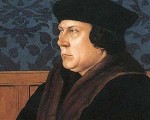
As tomorrow is the anniversary of Thomas Cromwell’s execution on 28th July 1540, I thought I’d examine the events leading up to his fall and consider why Henry VIII’s right-hand man ended up on the scaffold.
[Read More...] -
Mary’s Hand Opera – 1 and 2 August, London

I just wanted to let you know about this Tudor-themed opera that is being performed on 1st and 2nd August at Holy Cross Church, Kings Cross, London.
It’s the London premiere of this short opera (approx 70 minutes) on the life of Queen Mary I, daughter of Henry VIII and Catherine of Aragon. Here’s the blurb:
It’s a little-known fact that Queen Mary loved games of chance, such as dice and cards. In Mary’s Hand, the Queen shares a game of cards with the audience who get to choose the next card to be turned. Their choices prompt Mary’s reflection upon the influences and events in her life: her father
[Read More...]
Henry VIII, her mother Katherine of Aragon, her Catholic faith, her half-sister Elizabeth I, and her desperate desire for a child. -
August 2018 – Tudor Life – The Religious Impact of the Tudors
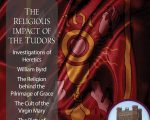
In this month’s Tudor Life magazine we are focussing on the wide-ranging impact of the Tudors on religion. It was a time of great upheaval throughout the country and we look into some of the major changes that took place during the Tudor period.
[Read More...] -
Mary I and Philip II of Spain

Today is the wedding anniversary of Queen Mary I and Philip II of Spain. The couple got married on 25th July 1554, the feast of St James, at Winchester Cathedral with Stephen Gardiner, Bishop of Winchester and Mary’s Lord Chancellor, officiating. The bride was thirty-eight years old and the groom was twenty-seven.
[Read More...] -
25 July – The Feast of St James and St Christopher
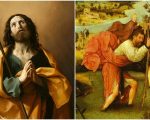
25 July is the Feast of St James the Great (or Greater), the apostle, and of St Christopher the Martyr.
St James was one of the Twelve Apostles and he and his brother John, “the Disciple whom Jesus loved”, were sons of Zebedee, a fisherman. His martyrdom, being executed by sword on the orders of King Herod, is recorded in the Book of Acts: “Now about that time Herod the king stretched forth his hands to vex certain of the church. And he killed James the brother of John with the sword.” (Acts 12:1-2, King James Version)
[Read More...] -
This week in history 23 – 29 July

23 July:
1543 – Mary of Guise and her daughter, Mary, Queen of Scots, escaped from Linlithgow Palace, where they were being watched, to Stirling Castle. They were helped by Cardinal Beaton.
[Read More...]
1563 – Death of Cuthbert Vaughan, soldier and Muster-Master and Comptroller of the English garrison at Newhaven (actually Le Havre), from the plague.
1584 – Death of John Day, Protestant printer, bookseller and publisher of John Foxe’s “Actes and Monuments” (“Book of Martyrs”), at Walden in Essex. He was buried at Little Bradley parish church in Suffolk.
1596 – Death of Henry Carey, 1st Baron Hunsdon, Privy Councillor and Lord Chamberlain, at Somerset House. Hunsdon was the son of William Carey and his wife, Mary Boleyn, sister of Anne Boleyn. Mary was mistress to Henry VIII at some point in the 1520s, and some people believe it is possible that Hunsdon was actually fathered by the King. -
Summer Feast Days Wordsearch

This week’s Sunday puzzle is a wordsearch on the feast days celebrated in Tudor times in the months of June, July and August. I hope you enjoy it!
Click on the link or image below to open and print out.
[Read More...] -
Henry VIII’s inventory and his spectacles
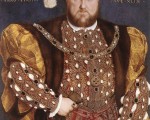
I’m finding research and writing a challenge at the moment as I’m having issues with my eyesight, which is very frustrating. It got me thinking about a Facebook Live talk I did on the Tudor Society Facebook page at Christmas on Henry VIII’s inventory and the mentions of magnifying glasses and spectacles that the king owned. He owned quite a few!
I thought I’d share this video with you today, along with a list of what I found in the inventory taken at Henry VIII’s death in 1547. I have changed the spelling to modern English.
[Read More...] -
Matthew Lewis – Princes in the Tower – Trailer

-
19 July 1553 – Mary I is proclaimed Queen of England, France, and Ireland, and all dominions
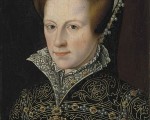
On this day in history, 19th July 1553, thirteen days after the death of her half-brother, the fifteen-year-old King Edward VI, thirty-seven-year-old Mary Tudor, daughter of Henry VIII and Catherine of Aragon, was proclaimed “qwene of England, France, and Yrland, and alle domy(ni)ons”.
Mary was unaware of the proclamation of her queenship and the fact that her first cousin once removed, Lady Jane Grey or Queen Jane, had been removed from the throne.
[Read More...] -
Janet Douglas, Lady Glamis (c.1504 – 1537)
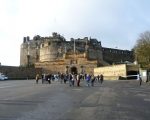
On 17th July 1537, Janet Douglas, Lady Glamis, was burned to death on the castle hill at Edinburgh after being found guilty of two counts of treason. She had been charged with plotting King James V of Scotland’s death (by poison) and assisting and corresponding with her brothers, Sir George Douglas and Archibald Douglas, 6th Earl of Angus.
So who was Janet Douglas, and what led to her brutal death?
janet Douglas was the daughter of the Scottish nobleman, George Douglas, Master of Angus, and his wife, Elizabeth Drummond. Janet was born c. 1504 and her father died at the Battle of Flodden on 9th September 1513. Janet’s siblings included Archibald Douglas, 6th Earl of Angus, who married Margaret Tudor, widow of James IV, and Sir George Douglas of Pittendriech. Janet married John Lyon, 6th Lord Glamis, when she was about sixteen years of age, in 1520. The couple had four children before Lyon died in 1528. Janet married her second husband, Archibald Campbell of Skipness, younger son of Archibald Campbell, 2nd Earl of Argyll by July 1532. The marriage was childless.
[Read More...] -
This week in history 16 – 22 July
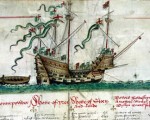
16th July:
1517 – Birth of Frances Grey (née Brandon), Duchess of Suffolk, at Hatfield. She was born on St Francis’s Day and was the eldest daughter of Charles Brandon, Duke of Suffolk, and Mary Tudor, widow of Louis XII and sister of Henry VIII. Click here to read all about her.
[Read More...]
1546 – Protestant martyrs Anne Askew, John Lascelles, John Adams and Nicholas Belenian were burned at the stake at Smithfield in London for heresy. Click here to read more about Anne.
1556 – Burnings of Julins Palmer, John Gwyn, and Thomas Robyns [some sources say Askew or Askin] in the old sandpits in Enborne Road, Newbury, after they were found guilty of sedition and heresy. They are known as the Newbury Martyrs.
1557 – Death of Anne of Cleves, fourth wife of Henry VIII, at Chelsea Old Manor after a few months of illness. On the same day, her body was embalmed and placed in a coffin covered with a cloth bearing her arms. Tapers were lit around her coffin and prayers said on a daily basis. She was buried in Westminster Abbey on 4th August.
1574 – Death of John Hart, scholar, phonetician and Chester Herald, in London.
1600 – Death of George Cranmer, scholar, administrator and nephew of Thomas Cranmer, the late Archbishop of Canterbury, in a skirmish with Irish rebels at Carlingford. He was in Ireland serving Charles Blount, Lord Mountjoy, as Secretary during a military campaign. -
General Tudor History Quiz

Happy Sunday! Here at the Tudor Society, we celebrate the day of rest by exercising only the little grey cells. Grab your favourite beverage and something yummy, make yourself comfortable, and let’s get started. Good luck!
[Read More...] -
Behind the scenes of the Tudor Society

For today’s Claire Chats video, we thought it would be interesting for you to see behind the scenes of the Tudor Society.
[Read More...] -
Alice Spencer, Countess of Derby (1559-1637)
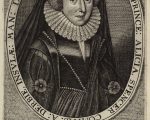
Alice was the youngest of eight daughters of Sir John Spencer (d.1586) and Katherine Kyston. She was born at Althorp, the seat of the Spencer family in Northamptonshire. Sir John was a prominent English gentleman, landowner, sheriff and Member of Parliament. John’s family would continue a dynasty that would grow throughout the seventeenth/eighteenth century as one of the country’s foremost aristocratic families. John’s motivation enabled the family to acquire great wealth through skilful land management and sheep farming, with all the Spencer daughters provided for in their marriages.
Alice married twice, with her first husband being Ferdinando Stanley, Lord Strange, heir to the earldom of Derby. His mother was Margaret Clifford, Countess of Derby, a claimant to the English throne through her maternal grandmother, Mary Tudor, Queen of France and sister to the former king, Henry VIII. This placed Ferdinando in a precarious situation, as his existence would be viewed with suspicion by the queen. This sense of Queen Elizabeth’s anxiety is evident from her treatment of Lady Katherine Grey, who was placed under house arrest several times (sister of Lady Jane Grey, another potential claimant to the throne through Mary Tudor). Alice and Lord Strange had a reportedly affectionate marriage that produced three daughters: Anne, Frances and Elizabeth.
[Read More...] -
July’s live chats – 20 and 27 July

As usual, we have two live chats in the Tudor Society chatroom this month: an expert chat with Matthew Lewis, author of The Survival of the Princes in the Tower and several other history books, and an informal chat about Thomas Cromwell. Each chat will be an hour long and will take place in the Tudor Society chatroom at www.tudorsociety.com/chatroom/.
Our informal chat will take place on Friday 20th July. The topic up for debate is Henry VIII’s right-hand man, Thomas Cromwell. I thought it was apt to discuss this man in the month of the anniversary of his execution. Love him or hate him, he’s a fascinating man and I’m sure we’ll have lots to talk about!
[Read More...] -
This week in history 9 – 15 July

9th July:
1539 – Execution of Sir Adrian Fortescue, courtier and landowner, on Tower Hill. He was condemned for treason by act of attainder, but it is not known what he had done to deserve this. He was beatified in 1895 as a martyr, but historian Richard Rex points out that he is unlikely to have opposed Henry VIII’s supremacy because he was a cousin of Anne Boleyn.
[Read More...]
1540 – It was declared that the marriage of King Henry VIII and Anne of Cleves was null and void, and that both parties were free to marry again. The couple had only been married six months.
1553 – Nicholas Ridley, Bishop of London, preached at St Paul’s Cross denouncing Henry VIII’s daughters, Mary and Elizabeth, as bastards. The congregation were “sore annoyed with his words”.
1553 – The Duke of Northumberland officially informed Lady Jane Grey of Edward VI’s death in front of the Council and nobles, going on to explain the terms of Edward’s will which named Lady Jane Grey as the heir to the throne. Lady Jane Grey accepted that she was Queen.
1553 – Mary (future Mary I) wrote to the Privy Council stating her claim to the throne and demanding their allegiance. Click here to read more.
While Mary was writing this letter, John Dudley, Duke of Northumberland, was informing his daughter-in-law, Lady Jane Grey, of Edward VI’s death and informing her that the King had nominated her as his successor. Jane collapsed weeping and declared “The crown is not my right and pleases me not. The Lady Mary is the rightful heir.” Northumberland and Jane’s parents then explained Edward’s wishes to the distressed Jane, and she accepted the crown as her duty.
1575 (9th-27th) – Elizabeth I was entertained at Kenilworth Castle by Robert Dudley, Earl of Leicester. It was a special visit in that it lasted nineteen days and was the longest stay at a courtier’s house in any of her royal progresses.
1586 – Death of Edward Sutton, 4th Baron Dudley, soldier and landowner, at Westminster. He was buried in St Margaret’s, Westminster. Sutton served as a soldier in Henry VIII’s reign in Ireland and Boulogne, and in Edward VI’s reign against the Scots. He was made a Knight of the Bath at Mary I’s coronation, and then given Lordship of Dudley Castle, where he entertained Elizabeth I in 1575. -
July Tudor Events Crossword
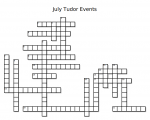
Test your knowledge of Tudor events, such as births, deaths, battles and burials, which took place in the month of July in the Tudor period with this fun crossword.
Click on the link or the picture to open and print out. Enjoy!
[Read More...] -
Thomas More’s Last Letter 1535

As it is the anniversary of the execution of Sir Thomas More today and yesterday was the anniversary of the day that he wrote his very last letter, I thought I’d have a look at the letter and the people that More mentions in it. I hope you enjoy my talk.
[Read More...] -
Frances Grey, Duchess of Suffolk (1517-1559)
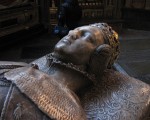
Frances (née Brandon) was the eldest daughter of Charles Brandon, Duke of Suffolk, and his third wife, Mary Tudor, sister of Henry VIII and widow of Louis XII of France. It is worth examining Frances’s parents and their significance within Tudor society before moving onto her life. Her father was an extraordinary character: magnate, courtier, and soldier, he exemplified the ideal qualities associated with being a male sixteenth-century courtier. Having been a close confidant to Henry VIII throughout his childhood, Suffolk found military fame in 1512 as a result of his involvement with the Anglo-French war. This war led to a successful siege of the French town of Tournai, with the inhabitants essentially forced to surrender to the invasion of the English king. As a result, Henry passed the keys of the city to Suffolk as a result of his honour and bravery.
[Read More...] -
This week in history 2 – 8 July
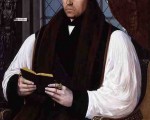
2nd July:
1489 – Archbishop Thomas Cranmer was born in Aslockton, Nottinghamshire, England. He was the son of Thomas Cranmer, and his wife Agnes (nee Hatfield). He served Henry VIII and Edward VI as Archbishop of Canterbury but was burnt at the stake for heresy by Mary I on 21 March 1556.
[Read More...]
1497 – Death of Sir William Haute, composer and cousin of Elizabeth Woodville. Haute was Sheriff of Kent at various times, as well as a Justice of the Peace and Commissioner. According to his biographer, Peter Fleming, he was also a patron of musicians, and a composer, composing carols and “polyphonic settings of the Benedicamus domino”.
1536 – Thomas Cromwell formally appointed Lord Privy Seal in Thomas Boleyn’s place.
1540 – Henry Fitzalan, the future 12th Earl of Arundel, appointed Deputy of Calais, replacing Arthur Plantagenet, Viscount Lisle.
1557 – Baptism of Philip Howard, 13th Earl of Arundel, son of Thomas Howard, 4th Duke of Norfolk, and his wife Mary (née Fitzalan). He was baptised in the Chapel Royal at Whitehall Palace with Philip of Spain and Nicholas Heath, Archbishop of York, standing as godfathers and Elizabeth Howard, dowager Duchess of Norfolk, standing as godmother.
1594 – Burial of Robert Scarlett (Old Scarlett), sexton at Peterborough Cathedral. A verse accompanying his portrait in the cathedral states that he buried Catherine of Aragon and Mary, Queen of Scots at the cathedral, but it is not known whether this is true.
1610 – Burial of Richard Knolles, historian and translator, at St Mary’s Church, Sandwich. His works include “The Generall Historie of the Turkes” (1603), The “Six Bookes of a Commonweale” (1606), which was a translation of Jean Bodin’s “La république”, and a translation of Camden’s “Britannia”, which was not published. -
Thomas Cromwell Quiz

Love him or hate him, Thomas Cromwell is a fascinating historical personality. Test your knowledge of Henry VIII’s right-hand man with this fun quiz. Good luck!
[Read More...] -
Expert Talk – Matthew Lewis – The Survival of the Princes in the Tower

This month we have a real treat – an expert talk by Matthew Lewis on the Princes in the Tower. We all have theories as to “who done it”, but maybe there is another explanation for their disappearance? In this 52 minute talk exclusively for the Tudor Society, Matthew Lewis looks into all the possible theories surrounding this fascinating moment in history…
[Read More...]
